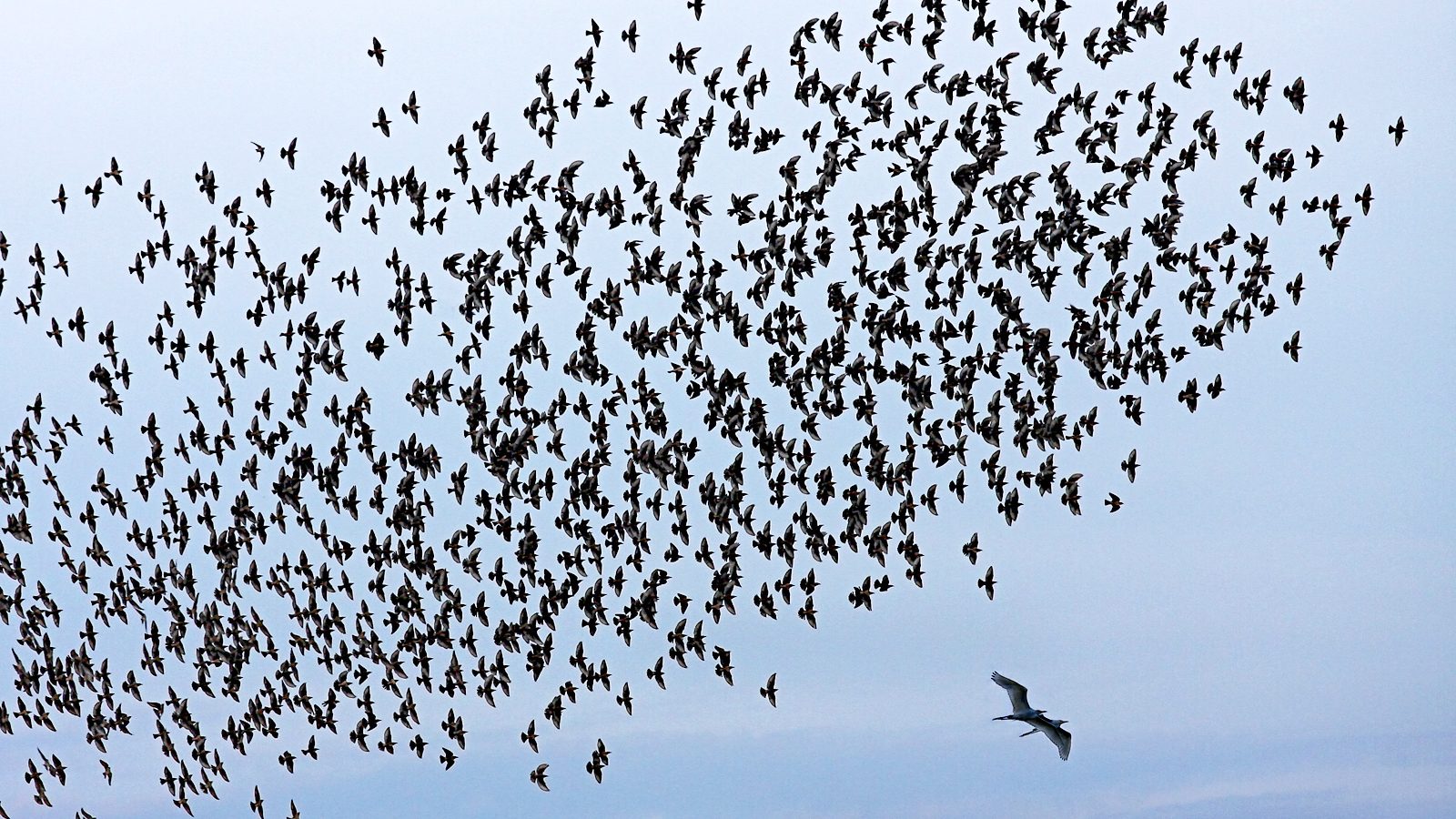Birds are good. In our internal work chat we were talking about some birds that we like. Then somebody had the good idea that for this day we should make a list of birds that we like! Below are some birds that we like. What are some birds that you like?
Loggerhead Shrike
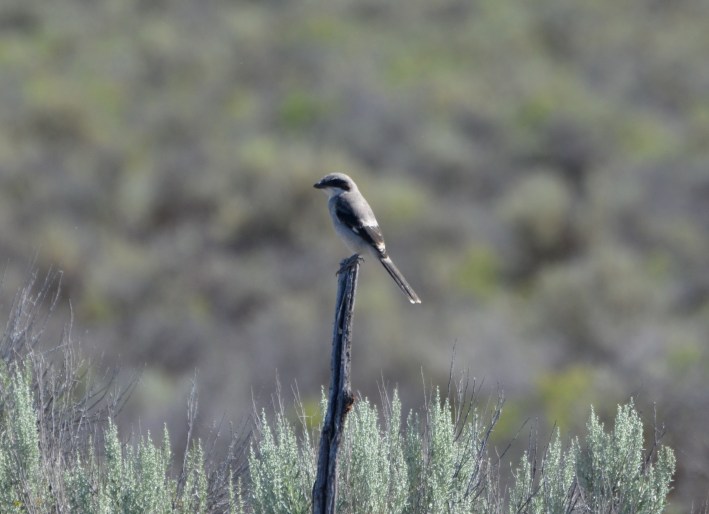
Large raptors are undeniably cool, but far more fascinating is the tiny shrike, one or two ounces of fluff and murder. These little guys are also known as butcherbirds for their habit of, um, impaling their prey. Yep. The shrike, its sharp, downwardly curved beak betraying its predatory nature, is famous for sticking the corpses of animals it kills on a sharp thorn, or barbed-wire fence, or any spikelike object it can find. The shrike oftentimes will kill animals larger than it, so the impalement serves two purposes. First, it stores the food for later, so the shrike can spend days feeding off a single kill. Second, it makes it easier for the shrike to tear strips of flesh off the body, like a sort of field-mouse shawarma. It's impressive that something so cute is also the most metal of birds. - Barry Petchesky
Common Loon
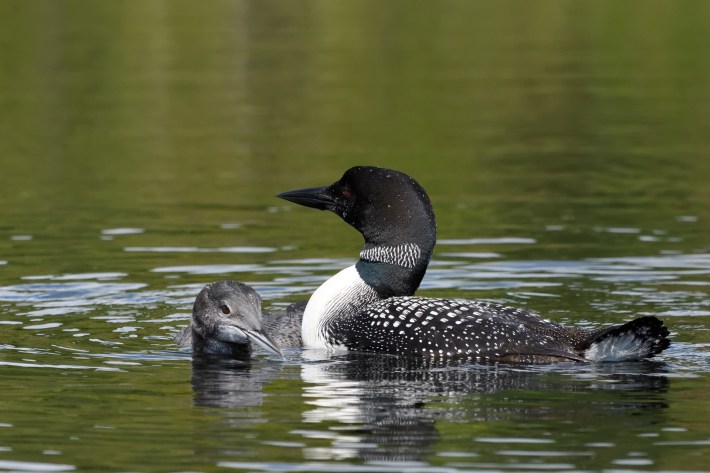
Loons are great. They live on lakes and rivers, they hunt in pairs, they form long-term monogamous relationships. They’re lovely, striking, duck-sized birds who catch fish by diving under the water and swimming around, one at a time. While the one loon zooms around under the water, the other loon just hangs out on the surface, drifting with the current. When the floating loon thinks it’s about time for the fishing loon to resurface, it will start calling, so that the two loons can find each other. Because loons can fish underwater for quite a long time, and therefore can drift some distance from each other, the call has to be loud and long and distinct. And boy oh boy is it ever. It is one of the very best noises to be heard on Earth.
One autumn a few years ago, during a vacation in Maine, my wife and I spent most of a day driving around trying to find a summer camp I attended on a scholarship decades ago. We got super lucky. The camp was shut down for the season when we found it, but caretakers were doing maintenance to the property that day, and by reciting as many details and names as I could remember to one of them, I was able to convince them I’d spent one glorious summer there and they agreed to grant us an hour to look around. The thing I most remembered from being there as a kid was the lake, so we hustled over to it. Sure enough! Out there in the middle, a beautiful loon, drifting. We watched her in silence for maybe a minute, and then she started making that incredible call, and the other loon popped up, and they swam back together. My wife had never heard the song in person before, but I remembered it well from hearing it as a 10-year-old. God, it ruled. - Chris Thompson
Northern Cardinal
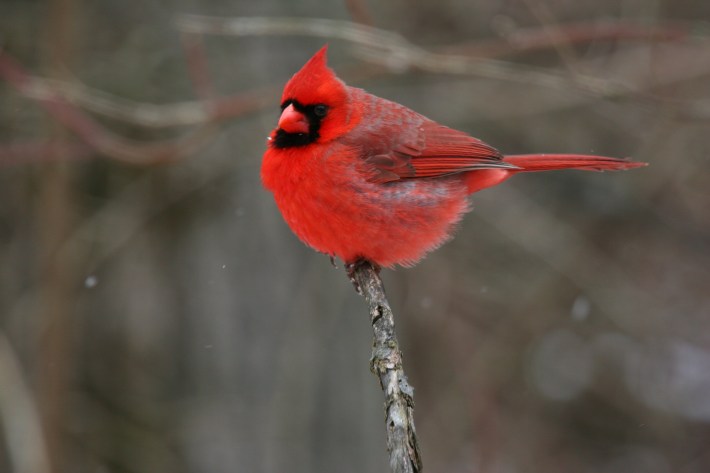
I don't know very much about birds, but I do know that cardinals are cool as hell. The dudes are bright red so you can always see them hanging out in trees, and the ladies I have learned via googling are also very beautiful and sometimes even have a little red on their heads. But Kelsey, you might be saying, there are so many reasons to like a bird that are not its colors. And to you I say, Shush. I love this bird because it is pretty and its little eyebrows make it look mad and you cannot take that from me. - Kelsey McKinney
Ibis
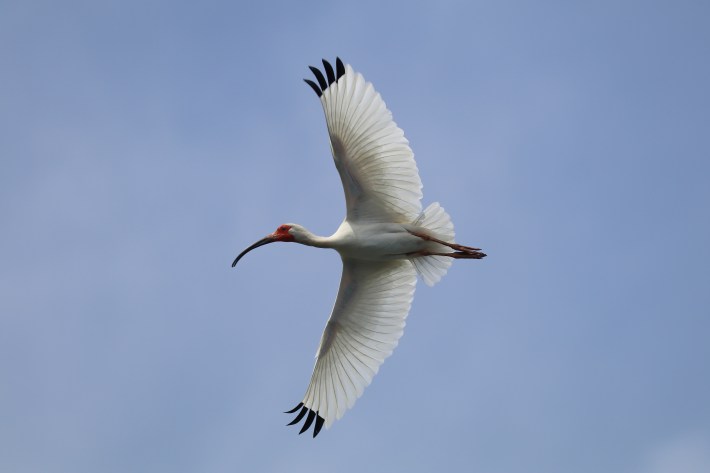
My favorite animals tend to be those with a tad of fuck you in them. I think, in part, because the attitude is earned. What good have humans been for, really? Things probably were a lot more chill—and the skies certainly were bluer—before humans arrived on the scene. So I'm not picking my bird for serenity because the birds don't owe us anything. Instead, I'm going with what may or may not be some type of ibis but are definitely the giant birds that refused to move for Willem Dafoe in The Florida Project.
"Good morning. Yeah. You gotta go home," Dafoe's motel manager tells the birds clogging his driveway. "There's cars coming through here. We've got guests." And not only do the birds not do as he asks, but one lifts a leg in what I am choosing to interpret as bird for, "Fuck off, asshole. We were here first."
It's a beautiful slice of Florida life, the tall, majestic, proud birds just standing there. They don't attack, but they take a while before moving too. Every time I watch that scene, I can feel the humidity through the screen, the beads of sweat once again forming on my back, even if I'm 3,000 miles away in California's dry heat, and I reach for a phantom water bottle out of pure instinct. Dafoe could only guess as to what type of birds they were because the scene was improvised. The birds just showed up. How can you not love birds that crash a film set, then steal the movie? Nature should fill you with wonder but also make you feel small, and somehow, in a matter of minutes, these giant birds, whatever they may be, do both. - Diana Moskovitz
Rock Pigeon
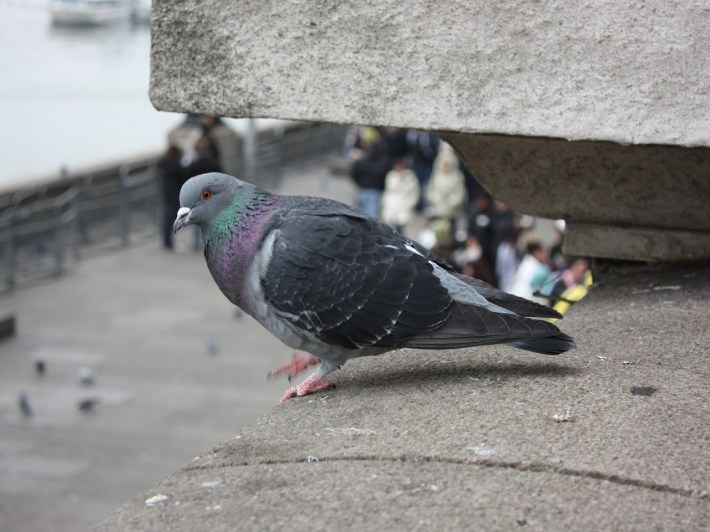
[Luis said he didn't have time to write about the bird that he likes.] - Luis Paez-Pumar
White-Throated Sparrow
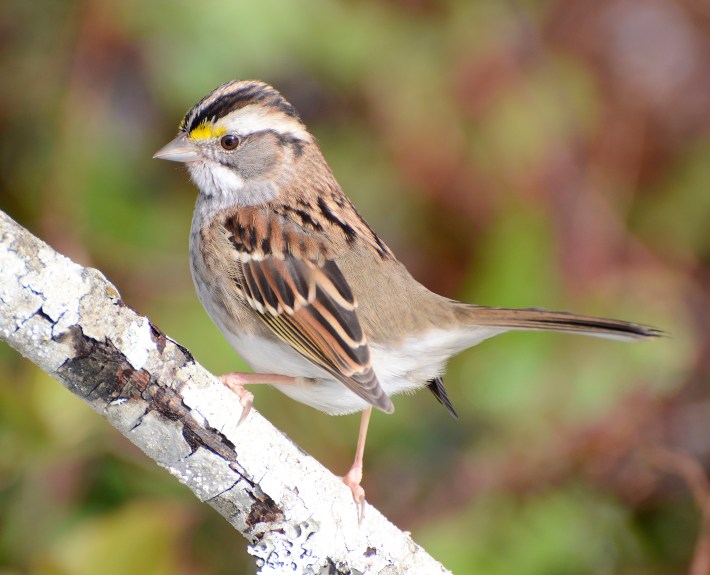
The white-throated sparrow is a cute little bird served poorly by its name. There is nothing special about a sparrow having a white throat. Botteri's sparrows have white throats. Chipping sparrows have white throats. House sparrows, Henslow's and Baird's sparrows, clay-colored and white-crowned sparrows: All of these have white throats. So does the white-throated sparrow. Many white-throated sparrows have a distinctive and happy shock of yellow eyeshadow; it's certainly a lot more distinctive than their white throats. It's one way to tell them apart from the white-crowned guys, which otherwise at a glance can appear nearly identical.
What really makes white-throated sparrows special is their song, an unbearably sweet, sad, optimistic little melody about loneliness and the search for companionship that National Audubon Society Field Guide to North American Birds represents, perfectly, with the lyric Poor Sam Peabody, Peabody, Peabody:
I first picked this song out from among all the wild birdsong around my ludicrous forest house this past spring, and there just are no words that could express the exact mixture of joy and admiration and affection and pity that welled up in me then. A lovelorn little white-throated sparrow had been singing its tiny bird heart out all morning from a tree alongside the driveway, and what I wanted more than absolutely anything else in the world, for the rest of that day, was for another white-throated sparrow—Sam Peabody, maybe!—to hear it, and find the singer, so that they could be together. It is just the absolute loveliest, most sincere, most hopeful sound. They should call it Sam Peabody's sparrow. - Albert Burneko
Penguins

Before they were given a shiny, futuristic, and poorly constructed new home a few years ago, the penguins at the Detroit Zoo lived in a dank, dark little cabaret that felt worlds away from the rest of the exhibits. Though the Motor City’s penguinarium may have been cutting edge when it was built in 1968, by the late '90s/early '00s it felt bare and forgotten, almost as if the birds had been squatting there for a decade while rogue zookeepers snuck in fish. Unlike every newly built enclosure at any zoo in the country, there were no fancy extras like touch screens or big projections or unique angles to view the animals. It was just you, the glass, and some penguins at the middle of a dull rectangle, except for one decoration that’s always stuck with me.
On the walls next to the enclosure, I remember there being shelves of what one might call “penguin memorabilia”—magazines, photos, random stuff not unlike what you’d see in a display case honoring, I don’t know, the 1960 Pirates at the Baseball Hall of Fame. These were, of course, incredibly boring compared to the living, swimming penguins who hung out nearby, but one little toy captivated me. It was a race track of sorts for three small plastic penguins, who would be made to climb some stairs and then slide down back to the base, over and over again for as long as its power lasted.
I have, to this day, never seen that thing anywhere besides the old penguinarium, which must have been why I found it so fascinating. In fact, it only recently occurred to me that this was a real toy, not something special made for the local zoo. You can see it at work in this video:
Pretty cool. - Lauren Theisen
Canada Geese

I was on a morning run through the woods one morning in April when I saw it. The little yellow bird squawked as it ran across the path, making it to the other side before I crossed by. It looked like it was yelling.
When I passed by, I noticed it wasn't the only one: There were five goslings with two adult geese. The adults hissed and flapped their wings at me as I ran by. It was very cute.
I moved adjacent to the woods last year, and this year I learned just how close I live near nesting sites for geese. The little goslings made many of my runs incredibly cute this spring. Eventually, the parents even stopped hissing at me as I ran by; this was probably because the babies were now old enough to handle themselves, but I like to think the parents decided I was cool.
I used to think of geese as obnoxious flying car horns whose only purpose in life was to spread loads of shit all over. This may still be true. But this year taught me that geese are pretty neat, too: The groups near my house appear to parent in gang broods with multiple sets of parents and babies, and they waddled along the creek for several months this year.
Sure, adult geese aren't as cute as the babies. But geese return to the same nesting spots every year, so I’ll be lucky to see these little babies year after year. - Dan McQuade
Snow Goose

I was driving around rural Delaware with my family one day at the end of last winter and suddenly enough snow geese to darken the sky flew above us in an obvious seasonal commute. We all agreed we were lucky to witness a portion of this majestic migration. Then maybe a half hour later, still on our ride, we saw the commuters, who according to the experts are based in Greenland, taking a break in a big dirt field. We pulled over and one of my sons and I walked toward the massive flock. As we got pretty close, the birds took off. I’m not capable of describing the sights and sounds as the flock swirled overhead in waves. But here’s a video clip taken by my wife that captures a good bit of the awesomeness. Despite all the movement and noise, it was an amazingly serene experience.
What a day! - Dave McKenna
Bald Eagle
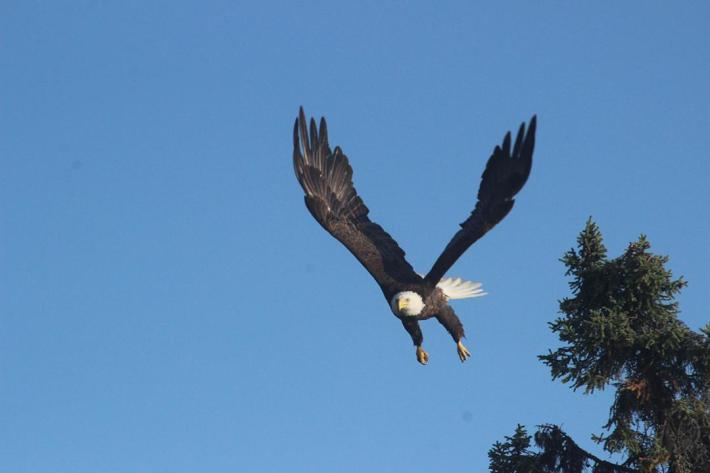
Anytime I see an eagle in the wild, I still react like I just spotted a celebrity walking down the sidewalk. OH MY GOD! THAT’S THE BIRD FROM THE MONEY! I took my kids to Busch Gardens once. The park has a reserve of bald eagles who are injured and can’t survive on their own out in the wild. So when we visited, I got to see MULTIPLE eagles in one place. And not one of them dropped a sure touchdown pass. It was one of those family trip moments where the kids were bored to death and I was enraptured. We picked the right bird to rep the USA. Not only is the eagle beautiful and majestic, but it’s also a bloodless scavenger that’ll kill and steal for even the pettiest of rewards. LOL that is so us. I wanna buy a pet eagle and keep it in my shower. - Drew Magary
House Sparrow

My aunt lives on a small farm in southwestern India, where she and my uncle grow big, fragrant peppercorns, jackfruit, gooseberries and more. The two of them share the land with creatures strange and headstrong enough to seem fictional: jewel-toned caterpillars; elephants that traipse through their plot; no-nonsense kingfishers; birds with wonderful names like “bulbul” and “racquet-tailed drongo”; and also a lot of termites, which I hear are a real pain. During one of her visits to our house in southeastern Michigan many years ago, my aunt marveled at the birds congregating around our gutters and patio. What species, short of resurrected dodo, could impress a person who’s seen it all? It was the humble house sparrow. House sparrows are stocky and swollen, sort of a dingy brown color and they were not something I considered worth paying attention to before then. But my mundane was her exotic. The natural world is varied and full enough to thrill us all in different ways, and that is kind of beautiful to me. - Maitreyi Anantharaman
Anhinga
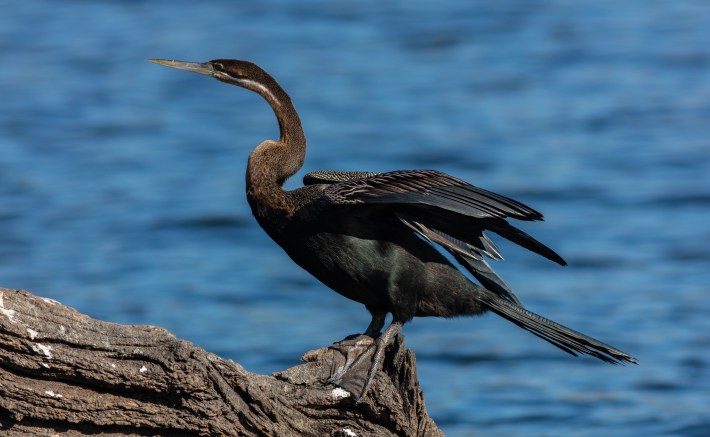
DEVELOPER NOTES: NEW HERO - ANHINGA (Aliases: Devil Bird, Swamp Turkey, Snakebird)
STATS
- Class: DPS
- Base Health: 200
- Wingspan: 4 feet
- Weaponry: Melee, knife-like beak with a 2x puncture bonus against fish enemies. Auto-mounted on telescoping neck. Damage is tripled when attacking in water environments.
SPECS
- Wide fan tail allows Anhinga to pursue water-based enemies at high speeds. Devs modeled it on the peacock's tail model but flattened it out.
- For balance purposes, the dev team slightly nerfed the Anhinga's swimming stamina by removing the "oiled feathers" passive ability shared by similar birds. Anhinga must recharge movement abilities by standing with its wings out like it's worshipping a deity or something; this is obviously absurd, as the Anhinga worships only death.
- An exclusive Anhinga skin is unlocked only during competitive play in the springtime season game mode. Skin comes with decorative and cool-looking aqua eye featheration.
- To activate "Pair With Mate" co-op ability, must wiggle ass in the air.
- Ultimate ability: Python mode. Allows Anhinga to consume hilariously oversized prey into its snake neck and gobble that shit down. Limits on prey size are removed while ability is active. - Patrick Redford
Goldfinch
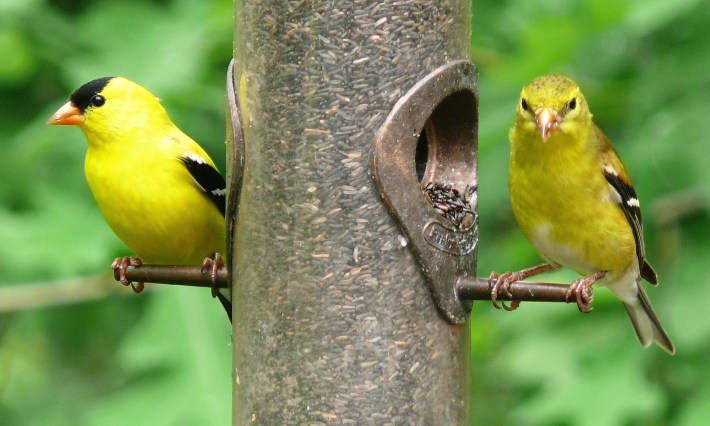
The goldfinch is the state bird of New Jersey, which is one of those things that I learned in elementary school that was somehow never supplanted by the other, outwardly more important things I’d learn later. The town where I grew up was once named Zabriskieville; the native people it displaced were the Lenni Lenape; the state bird of New Jersey is the goldfinch. Ted Leo, who is from the same part of New Jersey as me, wrote a song about the bird, although it’s also mostly about all the other wistful-angry things that Ted Leo songs are about.
They’re easy for even a bird-dunce like myself to identify, because they look like their name; I can’t tell you the differences between a chickadee and a nuthatch, and their names are no help in that. But goldfinches are small, and brilliantly yellow where they are not capped and tipped in black, and they are easy to find in New Jersey all year long, although in one of those recent instances of things that feel like overdetermined metaphorical literary feints but are in fact real the goldfinch might begin spending less time in New Jersey as global temperatures continue to rise. We won’t lose them entirely, just during the summer months when they are the brightest to behold. Two other states have also made the goldfinch their state bird, although I can’t speak to what the future holds for those states’ goldfinches. I have never seen a goldfinch in Iowa or Washington. If I’m being honest am not that invested in it.
Here is the goldfinch that I remember, and which I miss living someplace else. It is the dimmed one I saw in winter, for years, busy in my parents’ backyard even in the snow. There were some bushes the birds liked, and the feeder they set up once my sister and I left home so that they would always have visitors back there. When I call them after an uneventful week sometimes they tell me about the birds, the psychotically determined squirrels and the rare woodpeckers and the periodic unfortunate blue jay that gets blown up by a hawk. They don’t mention the goldfinches, because they’re normal. But I remember looking out the window on one of the dwindling days I’ve spent in that house as I’ve gotten further from it, during the cold months. It’s gray-and-brown or there’s some snow, but it is not high summer. Nothing at all is bright. And I see a goldfinch, dimmed for the season but at work doing the things it does, and I think that one is ours, that is my neighbor. I wish it well, in the absent way that people wish birds well, or remember what it’s like to go home. - David Roth
Bowerbird
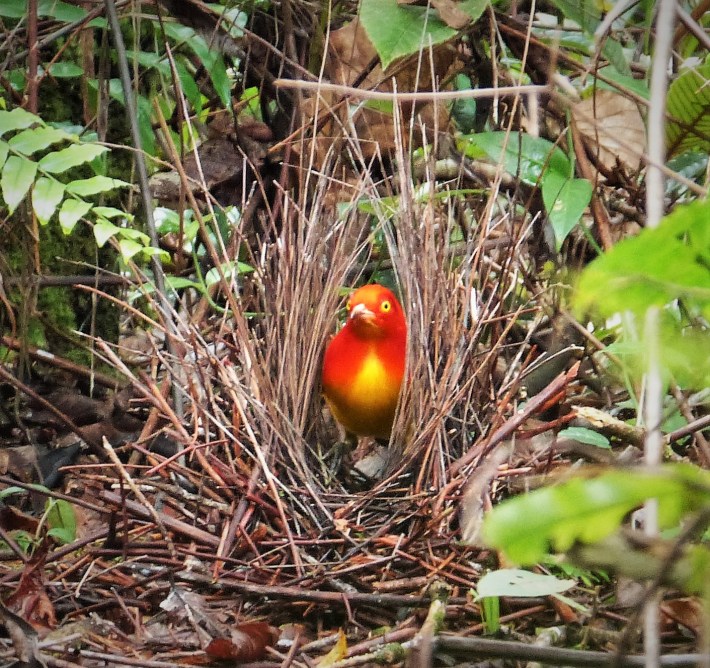
Are you aware of the bowerbird? They are a fabulous bunch of birds comprised of almost two dozen different species. They aren’t big, or mighty, or ferocious. They’re just small and known for being comically extra in their mating techniques. They’re like small avian hypebeasts.
But seriously, look at this glorious son of a bitch, who I first saw on BBC nature programming. David Attenborough is good at many things, but he’s too British to give my man the proper respect. His feathers are a rich gradient that says Hawaiian Punch come to life, or even “Tequila Sunrise for two.” This handsome, yet eccentric, doofus begins his seduction with the highly erotic art of staring, a his terrifying gaze drawing in a potential mate like a blinking warning light.
It gets even better because he decides to sing! And the sound he emits is something so guttural and chilling, like a kid jamming the keys on an MPC that only has the sounds of broken glass and cement mixers on repeat. Because of course my dude DJs on the side, you know. The moment I knew I was hooked is when he goes full camp, puffing himself up just to sashay in a halting and chaotic dance that culminates in a headbutt to his lady’s chest. If you think that’s wild, I cannot prepare you for how the bowerbird readies his nest for love. A certified freak. A legend. - Justin Ellis
Barred Owl
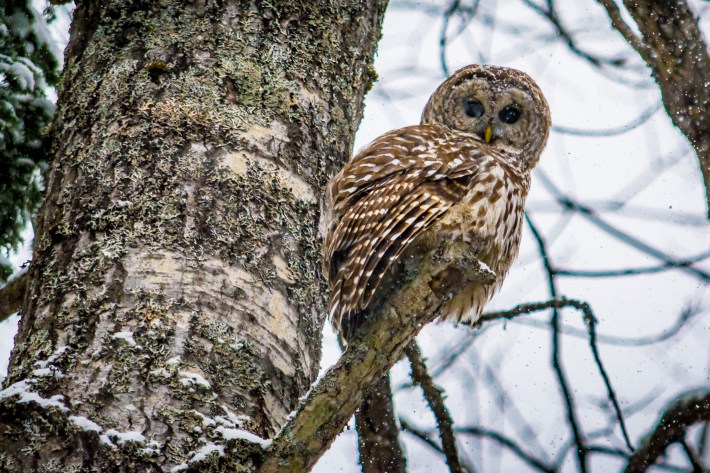
Birds mostly get a pass because they are small, often musical, and are considered the most direct descendants of the dinosaurs—unless, of course, they happen to be delicious, in which case their forebears don't really enter into it. Ask Comrade Magary—he'd savage an entire glade to get enough wrens to make a decent pie.
So let's ignore their nutritional value and concentrate on the aesthetics.
In other words, let's talk owls. Specifically the barred owl. They are allegedly smart (you tend to see them wearing mortarboards and graduation gowns in the wild and in some cartoons), they can swivel their heads in nearly a 360-degree arc, making them an excellent off-ball defender, and they will on occasion attack hikers, who more often than not have it coming for some reason related to smugness. If you have time today. befriend one and bring it to your local polling place. If there is someone you see trying to impede you or other voters from exercising their franchise, release the owl. It has cool black eyes, so the victims may experience some trouser soiling.
And if this seems unnecessarily vicious, count yourself lucky. We could have loosed the swans. - Ray Ratto
